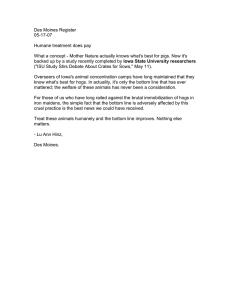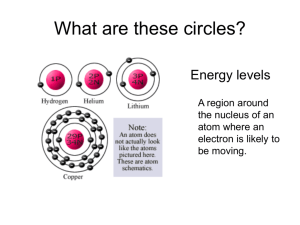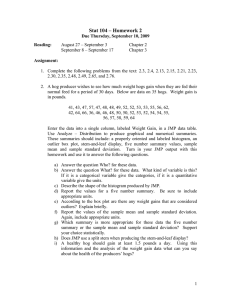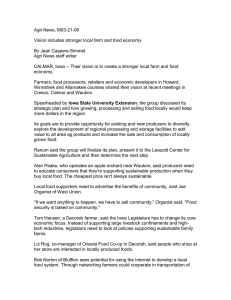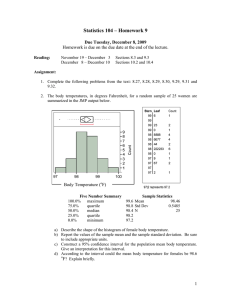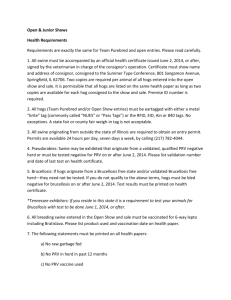Lecture 11: Experimental Material Three Decisions
advertisement
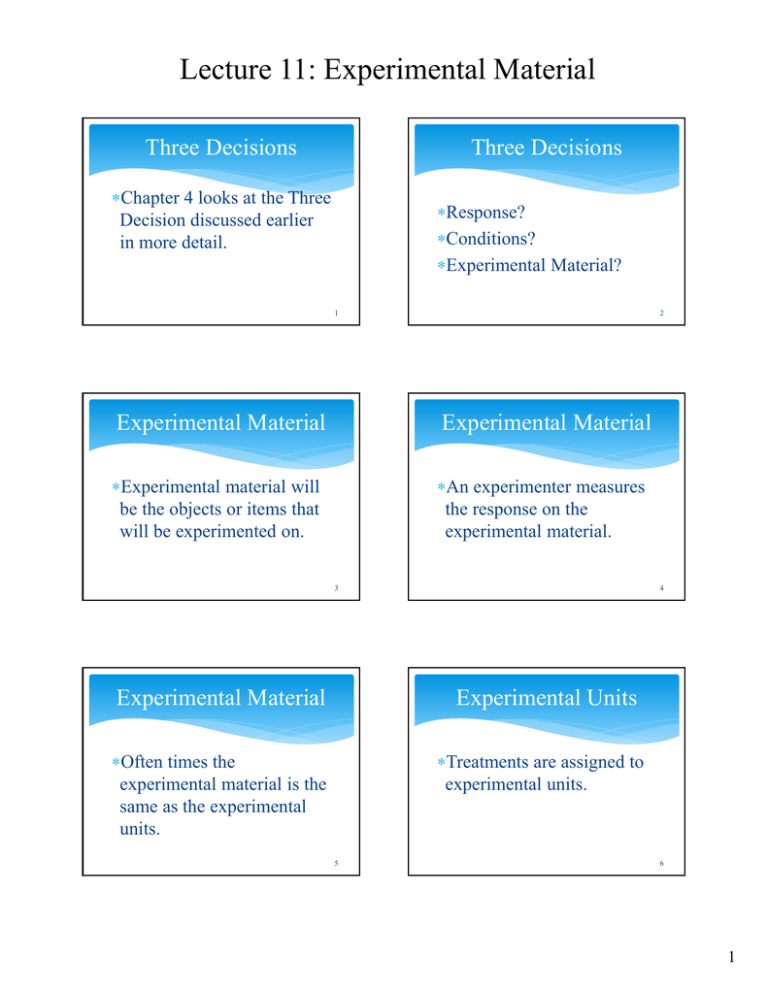
Lecture 11: Experimental Material Three Decisions Three Decisions Chapter 4 looks at the Three Decision discussed earlier in more detail. Response? Conditions? Experimental Material? 1 2 Experimental Material Experimental Material Experimental material will be the objects or items that will be experimented on. An experimenter measures the response on the experimental material. 3 Experimental Material 4 Experimental Units Often times the experimental material is the same as the experimental units. Treatments are assigned to experimental units. 5 6 1 Lecture 11: Experimental Material Example Example Conditions: Regular hog feed, Regular hog feed with Paylean (an additive advertised to add lean weight more quickly to the hog). Response: Weight gain (lbs) Experimental Material: young hogs. 7 Example 8 Example Hogs are raised in pens. There are around 20 hogs to a pen. Each pen has a common feed trough where the hogs compete for the food. Each pen gets the same amount of feed per day. The treatment (type of feed: Regular or with Paylean) is assigned at random to pens. 9 Example 10 Example Because hogs compete for a fixed amount of food for the pen, if some hogs get more other hogs will get less. The weight gains of the hogs within a pen are not independent. Experimental material: individual hogs. Experimental units: pens with 20 hogs. 11 12 2 Lecture 11: Experimental Material Example Alternative Example Because the pens are the experimental units. The actual response should be the average weight gain for the pen. Hogs are fed individually. The same amount of food is given to each hog each day. 13 Alternative Example 14 Alternative Example Because treatments (Regular or Paylean) will be assigned to individual hogs, individual hogs are the experimental units. Experimental material: individual hogs. Experimental units: individual hogs. 15 Alternative Example 16 General Goals Have experimental material that is representative. If experimental material is representative, the results of the experiment can be generalized. Hogs are treated individually and so their weight gains are independent observations. 17 18 3 Lecture 11: Experimental Material General Goals General Goals These two goals are often competing. Have experimental material that is uniform. If experimental material is uniform there is not much natural variability, making treatment effects easier to detect. More representativeness often means less uniformity. More uniformity often means less representativeness. 19 Representative 20 Random Sampling Random sampling from a larger population of experimental material does not guarantee representative experimental material but it does decrease the chance that the experimental material will be biased. A representative set of experimental material would look like the larger population from which it was taken. 21 22 Control Experimental Material Control of outside variables can make experimental material more uniform. By not letting an outside variable change, the experimental material will be uniform with respect to that variable. Random selection – less uniform – less chance of being biased. Control of outside variables – more uniform – less representative. 23 24 4

